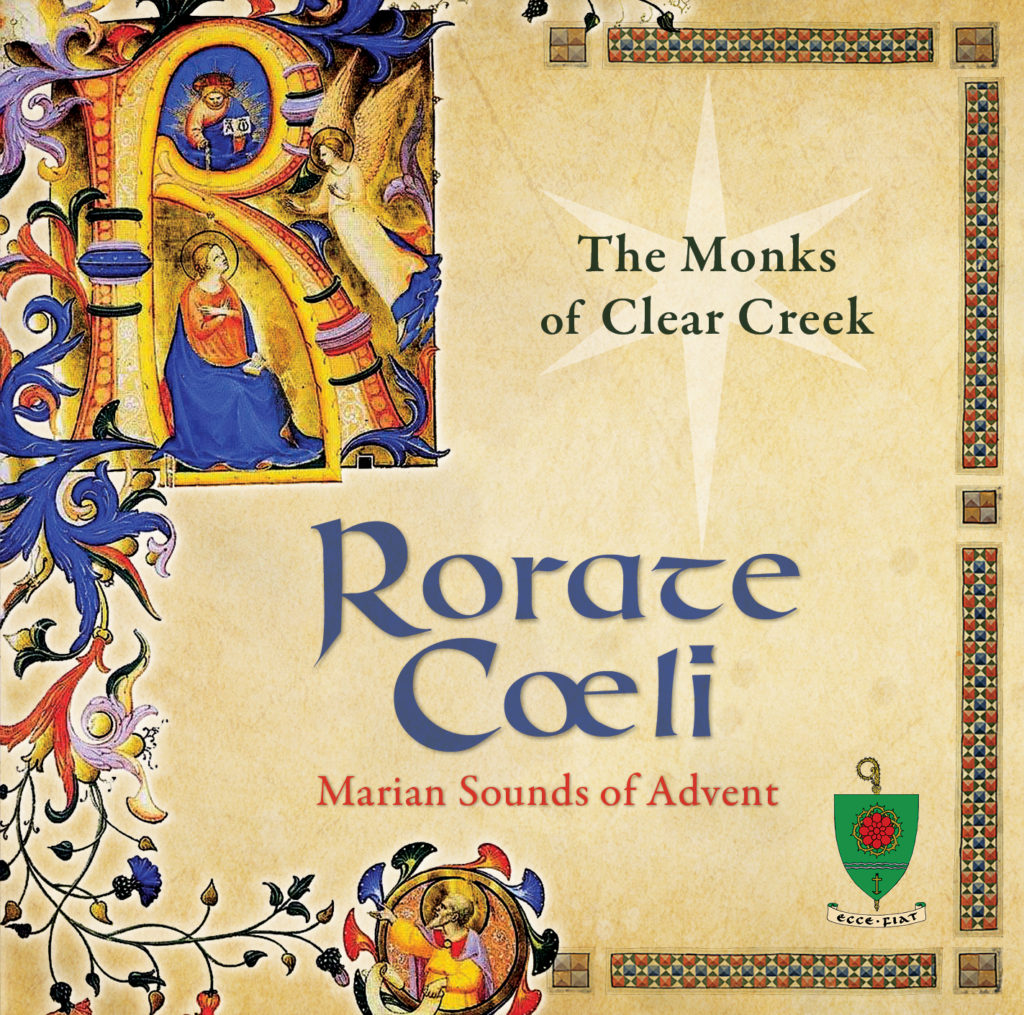
In the 1970s, three professors at the University of Kansas inaugurated a “Great Books” program with a grant from the National Endowment for the Humanities. Through the study of Western civilization, a number of the students in this program became interested in monastic life and eventually found their way to the Loire Valley in France and the Notre-Dame de Fontgombault Abbey, of the Solesmes Congregation. Some of these young men entered the community, hoping to someday be part of a new monastic foundation in the United States. As these Americans began their quest for a solid formation in the order, the project to found a Benedictine abbey in the United States was underway. Eventually, after several exploratory trips to the U.S., abbey leaders from Fontgombault found an ideal property in 1998 within the diocese of Tulsa, Oklahoma: a rustic ranch located along Clear Creek, in the Ozark Mountains near Hulbert in Cherokee County. On the feast of Assumption in that same year, the abbot of Fontgombault and the Bishop of Tulsa signed the charter that formally recognized the existence of a new foundation in Clear Creek, with the main group of founders arriving from France the following year. By the feast of Our Lady of Lourdes, on Feb. 11, 2000, the little Priory of Our Lady of Clear Creek was inaugurated.
The first Clear Creek monastery was established partly in a large log cabin and partly in a barn and stable. The horse stalls became monastic cells, and the barn became the first chapel. As more monks arrived, new and more organized accommodations were required. Architectural plans were drawn up for a proper monastery of Romanesque inspiration to be built of stone and brick on a hill above Clear Creek. By 2007, the new monastery was complete and then blessed by the Bishop. The Benedictine community grew there over the next few years. On the feast of Our Lady of Lourdes in 2010, Father Philip Anderson was named the first Abbot of Our Lady of Clear Creek Abbey. The monastery and the community have only grown since, comprising 60 monks at present.
Gregorian Chant at Clear Creek
Like the other monasteries of the Solesmes Congregation, Our Lady of Clear Creek Abbey – having devoted itself to the hidden life – is among the institutes ordered toward monastic contemplation. By virtue of their vocation, the monks of Clear Creek devote themselves to God alone in silence and in solitude, in constant prayer and willing penance. But this silence includes music. Both Benedictine tradition and the Clear Creek community’s heritage as part of the Solesmes Congregation entail a great appreciation for the ancient, sacred music of Gregorian chant – the plainchant that started developing as long ago as the 9th century, enduring across many civilizations to the present day.
Almost from the congregation’s beginning, in the mid-19th century, the monks of Solesmes in France aimed at restoring Gregorian chant to its original purity, after centuries of decline. To this end, they searched through the great libraries of Europe, eventually producing an impressive collection of chant manuscripts. These pioneers conceived what has been called the “Solesmes Method” of chant, with following generations of monks, furthering this work. Over the years, the sound and sensibility of the Solesmes Method would rise to a level of beauty and substance admired the world over. In his text The Solesmes Method of 1951, Dom Joseph Gajard wrote: “This Gregorian chant is an art that is both divine and human. It is divine because of its supernatural inspiration and that sweet and lovely odor of sanctity that breathes in all its melodies; and it is profoundly human through its musical structure and in the response it finds in simple, upright souls eager for the truth.” The Clear Creek monks – having inherited this chant tradition from the mother house of Fontgombault Abbey – continue to apply themselves to a sublime musical form that so enhances the sacred liturgy, as well as their monastic existence.
About the music-making at Clear Creek Abbey, Abbot Philip Anderson says: “Our life here is a consecrated life, a life consecrated to God. The activity that translates this on a daily basis is prayer, and we’re involved in Gregorian chant because it’s the medium through which we express our prayer, choral prayer. This is music that goes back to the early days of the order. Much of our prayer is sung, and this lifts our spirits. Gregorian chant is the Psalms raised to another level of expression, above speaking. The power of music is that it does amazing things in one’s soul, something that even Plato recognized. This chant is a vehicle that allows us to express the faith and prayer of praise that’s so characteristic of the Benedictine way of life. Marrying sacred texts to music, to singing, can result in a beautiful experience.”
Not all of the Clear Creek monks are trained musicians, though some are. But all the monks sing. “None of us came to this monastery in order to pursue a singing career or have a great choir, or anything like that,” says Abbot Anderson. “But it is often deeply moving, because we can achieve something special with the music, to where it feels like a sort of perfect prayer. We have now made a Clear Creek recording of Gregorian chant called Rorate Cœli: Marian Sounds of Advent so that people who can’t visit our monastery in Oklahoma can still hear our singing and benefit from it – whether that is purely enjoying the aesthetic beauty of the music, or hearing the deeper religious meaning behind it, or simply experiencing a sense of peace from the sound. The recording can go out into the world as a mission of beauty. And beauty is a language that everyone understands.”
Due for release September 9, the new album by the Clear Creek Monks Rorate Coeli (with the Latin translated as the beseeching the beautiful Psalm “drop down, ye heavens”). The recording was recorded in surround sound for release with Apple Music’s Spatial Audio with Dolby Atmos. It will also be available as standard digital, MFiT, HD Tracks and CD. The album, to be issued globally, features a Mass of Our Lady in Advent and a Mass for the Vigil of Christmas, which were recorded at Clear Creek Abbey by acclaimed multi-Grammy Award-winning producer-engineer Brad Michel. Michel had this to say of the unique recording experience, “Having done thousands of recording sessions, orchestras, string quartets, award winning-music groups, I was uniquely impressed with the Clear Creek Monks’ singing ability and musicality. They do not perform the pieces… but at Clear Creek, where we recorded the monks, they actually live the music. They believe and the music takes them over. When an artist is living every word like that, it’s impossible not to get caught up in the experience and that comes through in this recording.”
“One of my favorite pieces on the album, the title track, is a beautiful song chanted for Adventtide,” Abbot Anderson says. “The chants for the Advent Mass were chosen in order to evoke the atmosphere of expectation that is Advent, the time of year in preparation for Christmas. There’s a piece of polyphony included in there as well, the ‘Alma Redemptoris Mater,’ a simple and solemn hymn.” The album includes music that most people, even churchgoers, never really get to hear. “The Mass for the Vigil of Christmas isn’t the Christmas Eve mass that people usually go to church to hear,” the Abbot explains. “It’s for dawn on Christmas Eve day, and there are chants in there that are so simple and yet full of joy.”
Fr. Mark Bachmann, choirmaster at Clear Creek and Music Director for the recording shared that ‘Rorate Coeli’ is the long-gestating result of De Monfort Music/Sophia Music Group approaching Abbot Anderson with the idea of documenting the music made at Clear Creek Abbey. “It’s an astonishing turn of events for us, because I don’t think we would’ve ever had the idea ourselves of recording this album,” Father Bachmann says. “But the recording was a great, productive experience. We started with the conviction that to create true beauty, you must have sensitivity and competence all down the chain. And we had the advantage of being produced by Brad Michel, whose long experience and musical sensibility enabled us to make an acapella recording of the highest quality. We recorded in our oratory here, which is an unfinished church – but with acoustics well-suited for the singing of chant. We feel blessed to be able to share our music-making, through this album, with receptive souls across the globe.”
Beyond just listening to Rorate Coeli, those interested in how to sing Gregorian chant can attend a weeklong instructional event that Clear Creek Abbey hosts each summer. More information can be found on the monastery’s website.
